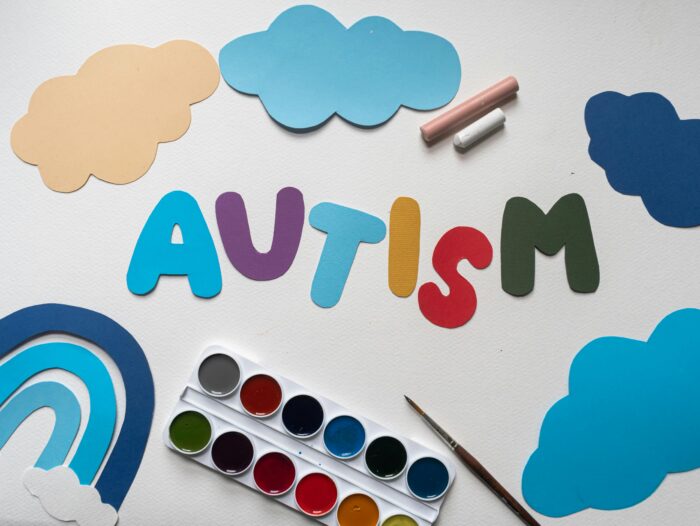Recognizing the Spectrum: A Comprehensive Overview to Autism Recognition
Recognizing the Spectrum: A Comprehensive Overview to Autism Recognition
Blog Article
Raising Recognition About Autism: the Importance of Early Diagnosis and Intervention
The discussion bordering autism range disorder (ASD) necessitates a focused evaluation of very early diagnosis and intervention techniques. Very early treatment not only boosts communication skills yet likewise cultivates social assimilation, inevitably improving the high quality of life for afflicted people.
Recognizing Autism Range Disorder
Exactly what is Autism Spectrum Disorder (ASD)? Autism Spectrum Problem is a complex neurodevelopmental problem identified by an array of obstacles in social interaction, interaction, and actions. It is termed a "spectrum" since it encompasses a broad range of signs and symptoms and levels of impairment, which can differ substantially from one person to one more. ASD materializes in very early youth, with signs usually appearing before the age of 3.
The etiology of ASD remains multifactorial, entailing a mix of ecological and hereditary impacts. Study suggests that individuals with ASD might show atypical neurodevelopment, resulting in distinctions in brain connection and function (autism). These variants can lead and impact cognitive processes to troubles in comprehending social cues, sharing feelings, and participating in reciprocatory communication
Additionally, people with ASD may show restricted passions and repeated habits, which can further contrast with typical developing trajectories. Recognition of the varied presentations of ASD is vital for cultivating an inclusive culture and promoting reliable assistance techniques. By advancing our understanding of ASD, we can much better deal with the needs of those influenced and establish treatments that improve their lifestyle.
Early Indications of Autism
Early recognition of Autism Range Disorder (ASD) is vital, as acknowledging the check in children can result in prompt treatments that significantly enhance end results. Caretakers and parents ought to recognize numerous early indications that may suggest a kid gets on the range.
One of the most typical early indicators is a lack of eye call. Youngsters with ASD might not react to their name being called or might reveal limited rate of interest in social communications. Delayed speech or a lack of spoken interaction can additionally be a measure, as some children may not start to talk up until later than their peers or might have problem launching discussions.
Recurring actions, such as hand-flapping, rocking, or insistence on sameness, are extra indications to consider. A kid may display unusual responses to sensory stimulations, such as being overly delicate to audios or appearances. Additionally, a lack of imaginative play or trouble in engaging with peers can be observed.
Recognizing these early signs is important for professionals and moms and dads alike, as it can motivate additional assessment and, if essential, the development of personalized strategies to sustain the kid's development and growth. - autism
Advantages of Early Medical Diagnosis
Prompt recognition of Autism Range Disorder (ASD) not just assists in very early treatment but additionally unlocks numerous benefits that can considerably enhance a youngster's advancement. Among the primary benefits of very early medical diagnosis is the chance for tailored support, which ensures that youngsters receive the specific sources they require to flourish. This individualized strategy can bring about enhanced social abilities, communication capacities, and psychological policy.
In addition, very early medical diagnosis allows family members to access educational and therapeutic services earlier, creating a structure for lifelong discovering and adaptation. Kids that get very early intervention are often better equipped to establish important life skills, which can bring about higher self-reliance as they get older.

Efficient Treatment Approaches

An additional effective approach is using Social Abilities Educating (SST), which helps youngsters with ASD learn suitable communications and establish friendships. Incorporating role-playing and video modeling can improve these abilities in a controlled setting. Additionally, Early Start Denver Design (ESDM) incorporates developing and behavioral methods for kids aged 12 to 48 months, promoting cognitive and emotional growth with play-based tasks.
Speech and language therapy is likewise crucial for dealing with communication difficulties, allowing youngsters to share their needs efficiently. Sensory assimilation treatment can aid children manage sensory sensitivities, enabling them to engage even more completely in their settings. By executing these targeted treatment professionals, caregivers and methods can significantly boost outcomes for youngsters with ASD, guaranteeing they reach their full potential.
Structure Helpful Neighborhoods
Developing a supportive area for people with Autism Spectrum Condition (ASD) enhances the performance of intervention strategies by offering a network of understanding and sources. Such neighborhoods foster their website inclusivity, allowing people Click Here with ASD to thrive in social, academic, and vocational settings. By advertising understanding and approval, these neighborhoods help in reducing preconception and encourage individuals to embrace their unique identifications.
Helpful neighborhoods can take numerous types, including regional assistance groups, academic campaigns, and advocacy organizations. These teams supply valuable resources such as workshops, educational sessions, and gatherings that help with connections in between families, caregivers, and specialists. By sharing strategies and experiences, neighborhood members can discover from each other, enhancing their ability to support people with ASD efficiently.
In addition, cooperation in between institutions, medical care service providers, and area companies is important in developing a comprehensive setting. Educating programs for educators and personnel on autism recognition can considerably boost the educational experience for students with ASD. Eventually, constructing supportive areas not only advantages individuals with autism yet likewise enriches the whole neighborhood, promoting a society of empathy, respect, and good understanding.
Conclusion
Raising awareness regarding autism and stressing the importance of early medical diagnosis and treatment can greatly affect individuals on the spectrum and their family members. Prompt recognition of early indications promotes access to necessary support, improving interaction and social skills. Effective treatment approaches foster self-reliance and boost quality of life. By cultivating understanding and reducing stigma within neighborhoods, a encouraging and proactive environment can be developed, eventually profiting those affected by Autism Range Problem.
The discussion surrounding autism range disorder (ASD) necessitates a concentrated evaluation of very early diagnosis and treatment techniques. Early treatment not only boosts communication abilities however also promotes social integration, eventually boosting the high quality of life for affected people. ASD manifests in early childhood years, with symptoms normally appearing before the age of three.
Prompt recognition of Autism Range Disorder (ASD) not only assists in very early intervention but additionally opens numerous benefits that can dramatically enhance a youngster's development.Raising awareness regarding autism and stressing the relevance of very early diagnosis my explanation and intervention can exceptionally impact individuals on the spectrum and their households.
Report this page